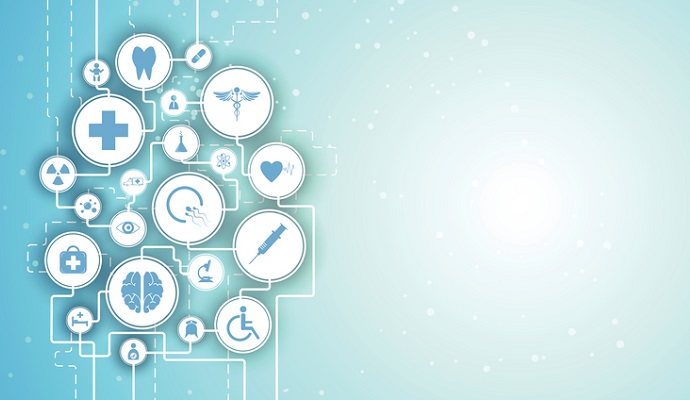Understanding the Basics of the Patient-Centered Medical Home

- The patient-centered medical home (PCMH) is one of healthcare’s most popular designations, serving as a way for primary care organizations to codify and implement population health management programs, care coordination tactics, and the principles of comprehensive, data-driven, accessible care.

While several different national organizations offer PCMH recognition, no healthcare provider can embark upon in such extensive changes to their patient care strategies without having a solid understanding of how the patient-centered care model works.
In the first article of a new series focused on practice transformation, HealthITAnalytics.com will break down the basics of the patient-centered medical home before moving deeper into best practices for adopting patient-centric care models.
What does “patient-centered medical home” actually mean?
The patient-centered medical home is a structured approach to primary care delivery that stresses putting the patient-provider relationship at the core of all healthcare decision making. In order to support the entirety of a patient’s primary care needs, a PCMH provider develops a team-based approach to healthcare with an emphasis on preventative services, care coordination, and access to care.
According to the Joint Principles of the PCMH, developed and maintained by a number of professional societies, the five main features of a successful patient-centered medical home include:
• Providing comprehensive care by taking into account the patient as a whole person and supporting both mental and physical health with a coordinated care team
• Taking a patient-centered approach to care delivery by developing meaningful relationships with the patient, her family, and her caregivers that takes into account the patient’s socioeconomic and cultural values and preferences
• Employing care coordination strategies by harnessing health information exchange, EHR interoperability, and population health management analytics to ensure that patient health information is accessible and usable at all care sites across the healthcare continuum
• Ensuring the accessibility of services by offering extended hours, alternative sites for care during emergencies, improving the scheduling process, or making use of technologies such as telehealth, mHealth, and home monitoring devices
• Focusing on care quality and patient safety by using evidence-based medicine, clinical decision support tools, healthcare analytics, and best practices to provide a safe, high-quality, satisfactory experience for each and every patient
Providers may adopt some or all of the requirements for being recognized as a PCMH organization based on available resources and goals. PCMH transformation may or may not be predicated on the implementation of risk-based reimbursement arrangements, but the PCMH actively supports value-based financial structures and certainly shares many of the same principles used by accountable care organizations (ACOs). Some ACOs even require PCMH recognition as a basis for participation in risk-sharing schemes.
What organizations provide official PCMH recognition?
The American Academy of Pediatrics (AAP), American Academy of Family Physicians (AAFP), American College of Physicians (ACP), and American Osteopathic Association (AOA) are responsible for having developed the principles of the patient-centered medical home, but these organizations do not administer recognitions.
Several different local and national bodies will provide official PCMH recognition based on specific criteria. The National Committee for Quality Assurance (NCQA) framework is among the most widely pursued. The Accreditation Association for Ambulatory Health Care (AAAHC) offers a certification for organizations that meet certain criteria, including an on-site assessment taken from the point of view of a patient. AAAHC also provides a PCMH accreditation, which includes a comprehensive review of organizational structures and care quality to ensure high patient satisfaction and strict adherence to the principles of the PCMH model.
Other organizations that provide certifications include The Joint Commission and URAC.
The NCQA’s PCMH recognition comes in three stages, with Level 1 being the most basic and Level 3 the most advanced. While paper-based practices may achieve Level 1 recognition, the higher levels tend to require the use of a comprehensive EHR system and at least some associated data-driven analytics, clinical decision support, or population health management features.
What are some of the key competencies of a patient-centered medical home?
PCMH adoption starts with a strong commitment to improving care quality and the patient experience. Organizations are encouraged to take an assessment of available resources, shortfalls in staffing or patient care, and opportunities for improvement before embarking on the PCMH journey. Securing executive buy-in and clinician engagement is an important first step for the process, and can be a critical part of a successful transformation.
 All PCMH recognitions require organizations to utilize certain protocols intended to foster coordinated, patient-centered care. For NCQA recognition, these criteria include the use of patient registries for disease or risk stratification, medication reconciliation, and the use of discharge planning, summaries of care, and health information exchange to ensure smooth transitions for patients moving across the care continuum.
All PCMH recognitions require organizations to utilize certain protocols intended to foster coordinated, patient-centered care. For NCQA recognition, these criteria include the use of patient registries for disease or risk stratification, medication reconciliation, and the use of discharge planning, summaries of care, and health information exchange to ensure smooth transitions for patients moving across the care continuum.
More advanced patient-centered medical homes under the NCQA model will also implement an EHR system with clinical decision support, e-prescribing and computerized provider order entry (CPOE). They will be able to report clinical measures, provide patient self-management support, and be able to utilize electronic drug and allergy interaction warnings.
Healthcare organizations must also show sustained and continued improvement in their performance in order to maintain their designations. Providers must periodically renew their recognitions by undergoing follow-up assessments.
Why is PCMH adoption important for achieving the Triple Aim?
What’s the point of implementing so many technological and workflow upgrades? Because the patient-centered medical home is one of the primary drivers of meaningful healthcare reform. The Triple Aim is for healthcare organizations to reduce costs, increase patient care quality and satisfaction, and effectively manage the health of populations – and the PCMH model has been proven to do all three.
PCMH providers have been able to increase life expectancy, save millions through the better management of chronic diseases, decrease preventable readmissions by improving care coordination, and ensure better adherence to primary care. Patients are more satisfied when treated at a PCMH provider, the Patient-Centered Primary Care Collaborative recently found, and are less likely to spend long periods of time in the hospital due to chronic disease when managed appropriately by their hospital and primary care providers.
While the patient-centered medical home might not be for every organization, evidence for its effectiveness and impact on population health management continues to grow as adoption of the model spreads.
In the next installment, HealthITAnalytics.com will dive deeper into the requirements for PCMH recognition and explore the way data analytics, population health management tools, and health information exchange can help to meet the necessary criteria.
